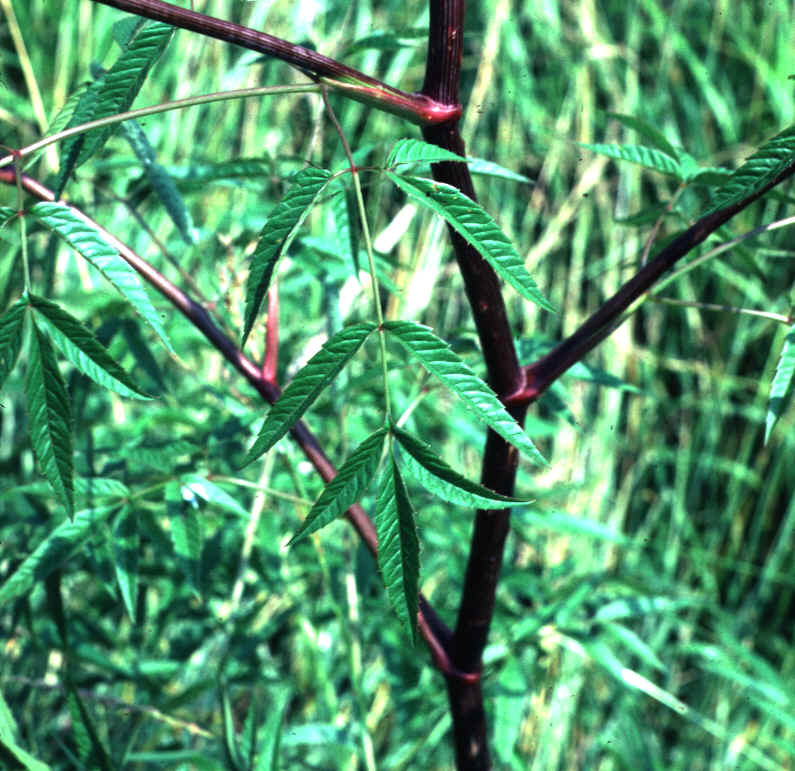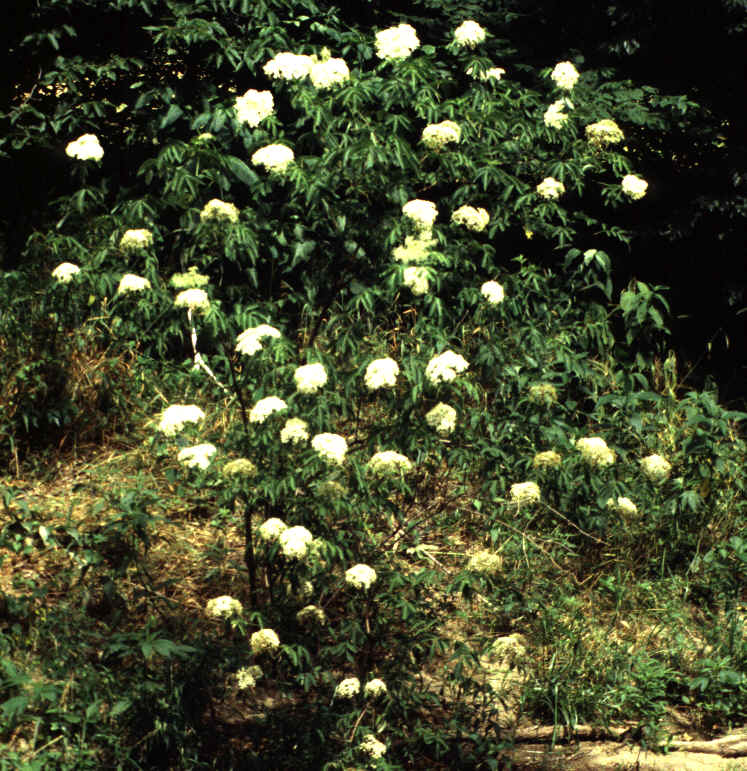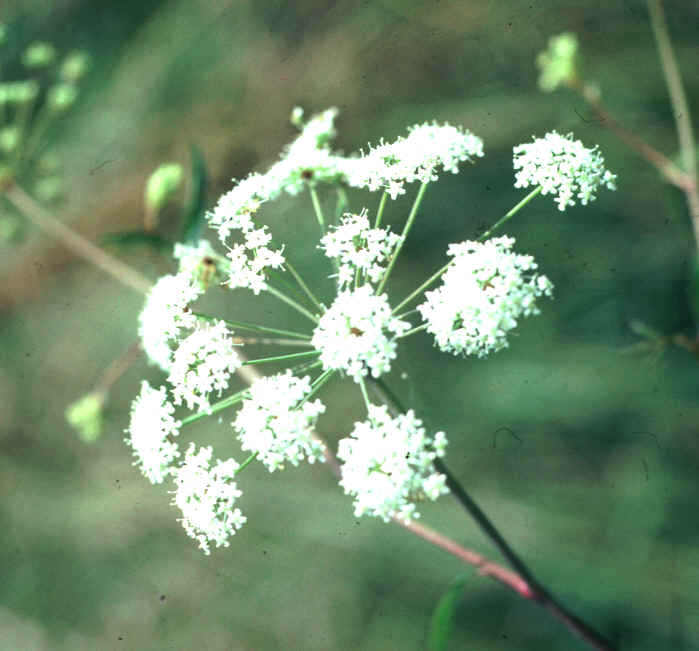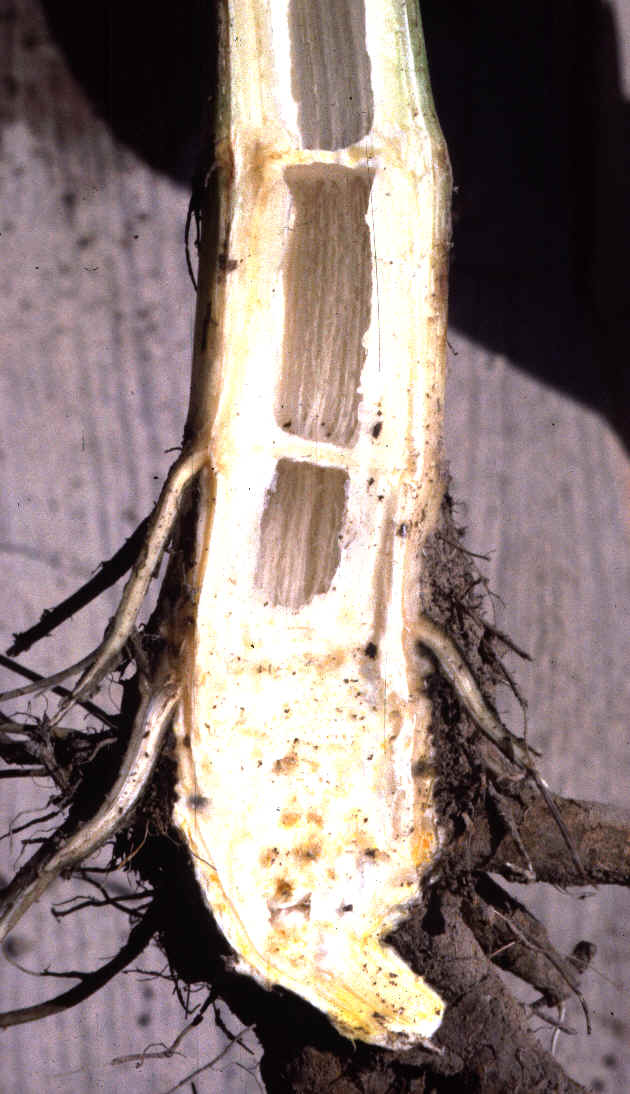
Waterhemlock

Foliage and stems. Key characteristics: stems are smooth and have purple spots. Leaves are compound.

Flowering plant. Waterhemlock is usually found in wet sites, such as ditchbanks.

Flowers. Key characteristics: white and occur in compound umbels.

Root cross section. Several taproots occur at the base.
Life cycle: perennial.
Toxic Plant: cattle, horses, sheep and humans may be affected by the cicutol and cicutoxin compounds found in all parts of the plant. The roots of the plant are regarded as the most toxic portion and as little as 2 ounces (about the size of a walnut) have been reported sufficient to kill a cow. Symptoms of poisoning include muscle spasms, dilated pupils, dizziness, diarrhea, abdominal pain and convulsions. Water hemlock is one of the most toxic plants in the United States.